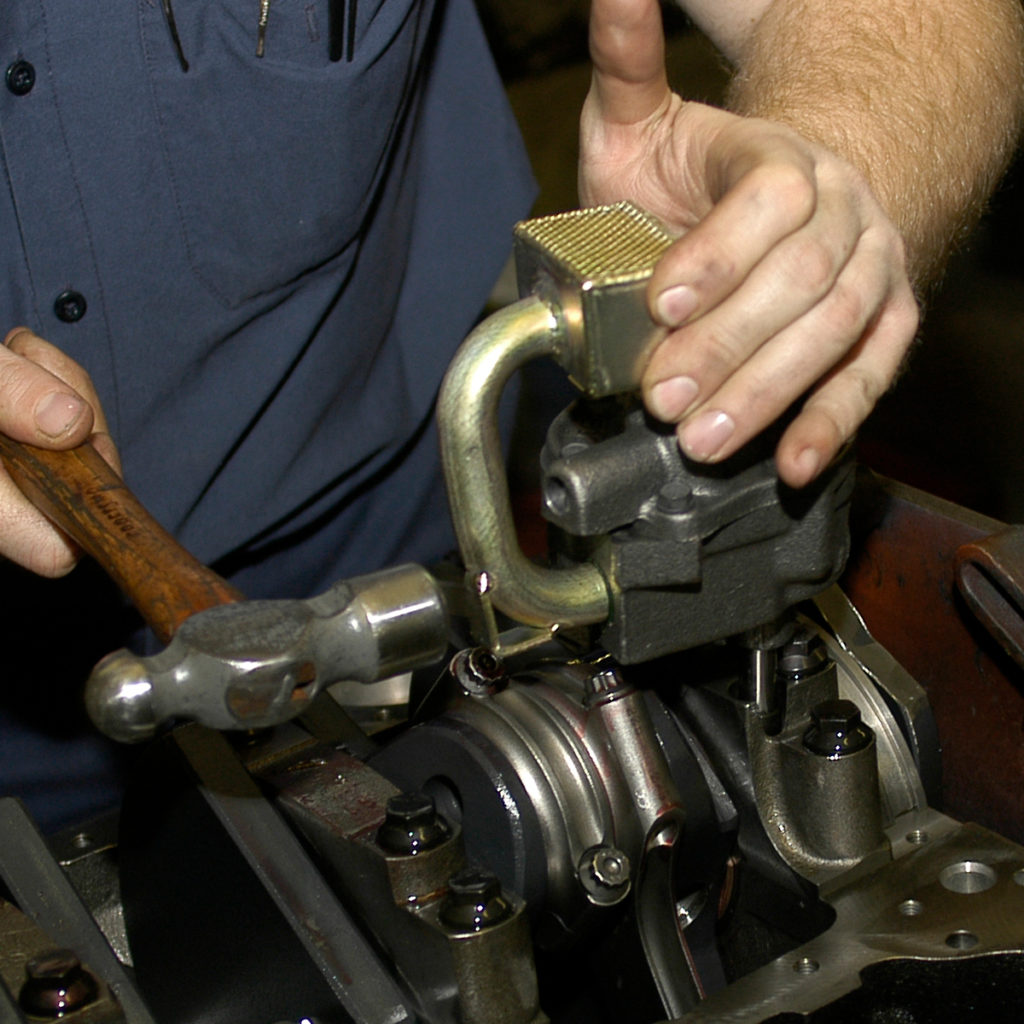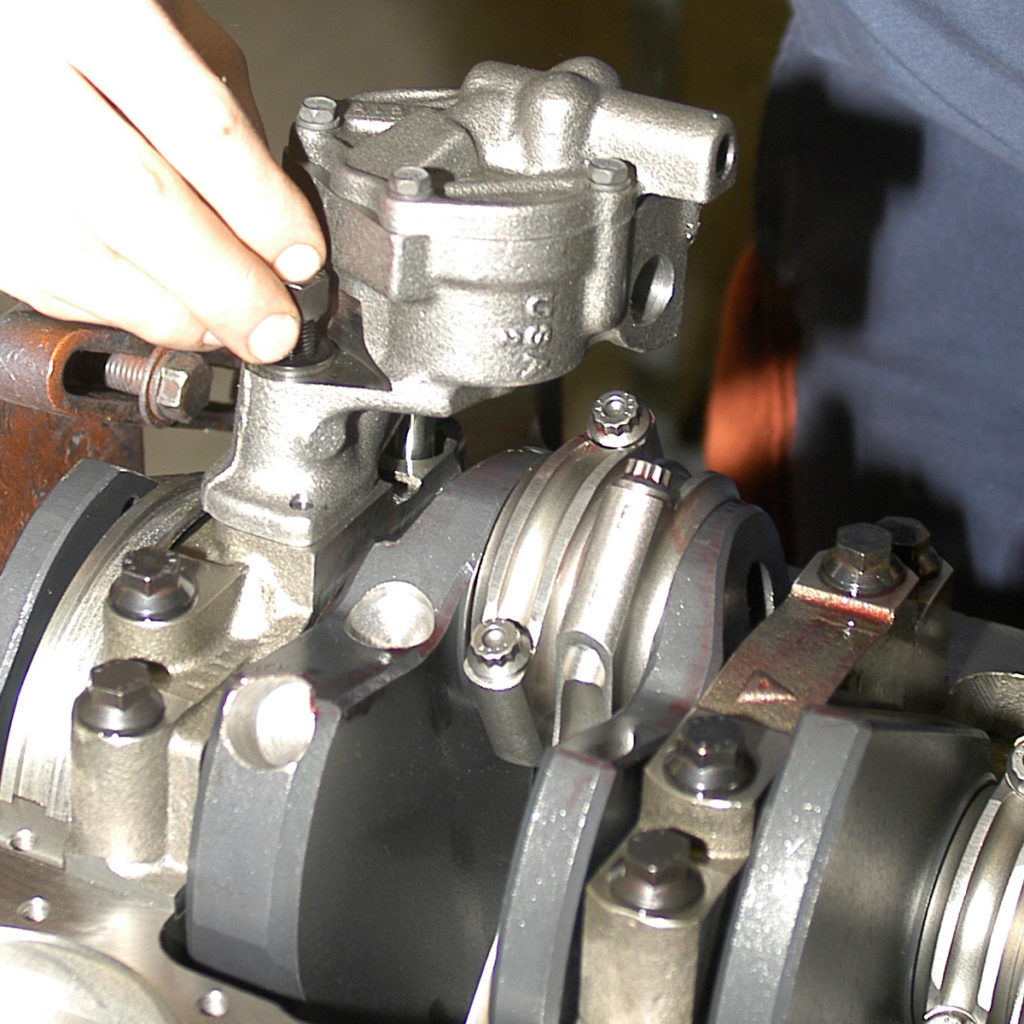Oil Pumps and Racing Applications
High Volume Oil Pumps by Ohio Crank staff.
The oil pump’s most difficult task is to supply oil to the connecting rod bearing that is the farthest from the pump. To reach this bearing, the oil travels from three to four feet, turns numerous square corners through small holes in the crankshaft to the rod bearing.
The rod bearing doesn’t help matters. It is traveling in a circle which means centrifugal force is pulling the oil out of the bearing.A 350 Chevy has a 3.4811 stroke and a 2.111 rod journal. The outer edge of the journal travels 17.5311 every revolution. At 1000 RPM, the outer edge is traveling at 16.6 MPH and 74.7 MPH at 4500 RPM. If we take this engine to 6500 the outer edge is up to 107.9 and at 8500 it is 141.1 MPH.
Now imagine driving a car around a curve at those speeds and you can feel the centrifugal force. Now imagine doing it around a circle with a 5.581 diameter. The size of the gears or rotors determines the amount of oil a pump can move at any given RPM.
Resistance to this movement creates the pressure. If a pump is not large enough to meet the demands of the engine, there will not be any pressure. Or if the demands of the engine are increased beyond the pumps capabilities there will be a loss of oil pressure. This is where high volume pumps come in; they take care of any increased demands of the engine.Increases in the engine’s oil requirements come from higher RPM, being able to rev faster, increased bearing clearances, remote oil cooler and/or filter and any combination of these.
Most high volume pumps also have an increase in pressure to help get the oil out to the bearings faster.That is what a high volume pump will do. Now let’s consider what it will not do. It will not pump the oil pan dry. Both solid and hydraulic lifters have metering valves to limit flow of the oil to the top of the engine.
If an oil pan is pumped dry, it is because the holes that drain oil back to the pan are plugged. If the high volume pump is also higher pressure, there will be a slight increase in flow to the top.It will not wear out distributor gears. The load on the gear is directly related to the resistance to flow. Oil pressure is the measure of resistance to flow.
The Ford 427 FE “side oiler” used a pump with relief valve set at 125 psi and it used a standard distributor gear. Distributor gear failures are usually caused by a worn gear on a new cam gear and/or worn bearings allowing misalignment. It will not cause foaming of the oil. With any oil pump, the excess oil not needed by the engine is recirculated within the pump. Any additional foaming is usually created by revving the engine higher. The oil thrown from the rod bearings is going faster and causes the foaming. This is why high performance engines use a windage tray.
An oil pump will not cause spark scatter. Because of the pump pressure there is a load on the distributor gear. The number of teeth on the oil pump gears determine the number of impulses per revolution of the pump. In a SB Chevy there are seven teeth on each gear giving 14 impulses per revolution.
At 6000 RPM the oil pump is turning 3000 RPM or 50 revolutions per second. To have an effect on the distributor, these impulses would have to vibrate the distributor gear through an intermediate shaft that has loose connections at both ends. Spark scatter is usually caused by weak springs in the points or dust inside the distributor cap.High volume pumps can be a big advantage if used where needed.
If installed in an engine that does not need the additional volume they will not create a problem. The additional flow will be recirculated within the pump.
View or print the article pdf here.
All images and text copyright © -1994 to current date -Ohio Crankshaft and related companies involved


